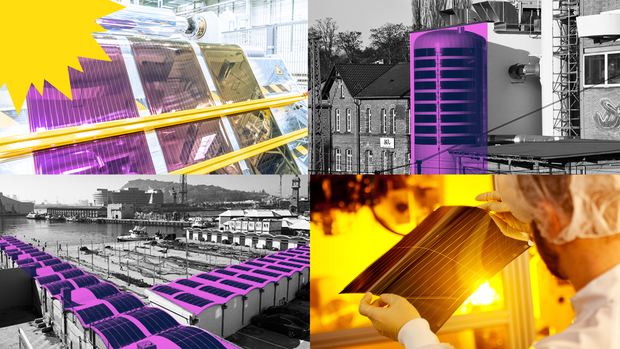The cells are thin, light and flexible – this opens up completely new application possibilities.
(Photo: Heliatek [M])
Dusseldorf When Karl Leo looks at houses, he sees one thing above all: potential. “Almost every roof would have to be covered with a solar system,” he says. But the physics professor at the TU Dresden also knows how difficult it is.
Roofs are arched or angled, windows must not be darkened. “A lot of valuable surface area is lost as a result,” says Leo, one of the leading researchers in the field of solar cell technology.
The regulations for solar systems on new buildings are currently being tightened significantly depending on the federal state. Because by 2035, Germany should be completely supplied with green electricity. The Renewable Energy Sources Act (EEG) provides for 215 gigawatts of installed photovoltaic capacity in 2030. As part of the photovoltaic strategy of the Federal Ministry of Economics, the expansion must therefore triple from a good seven gigawatts in 2022 to 22 gigawatts per year. One gigawatt corresponds to the output of a nuclear power plant.
Read on now
Get access to this and every other article in the
Web and in our app free of charge for 4 weeks.
Further
Read on now
Get access to this and every other article in the
web and in our app.
Further
